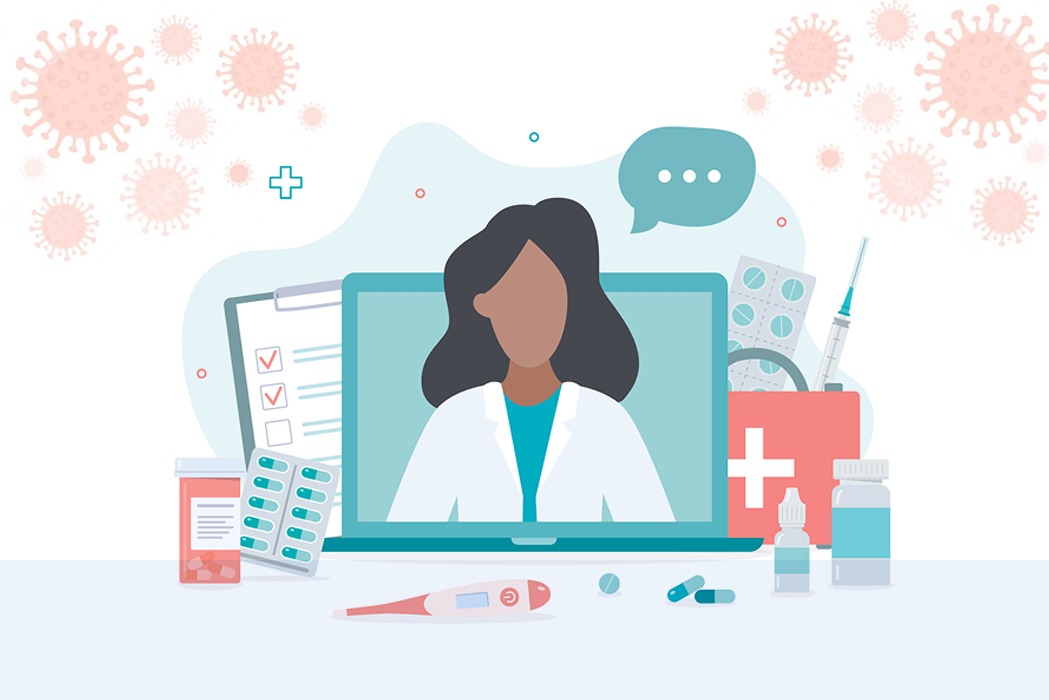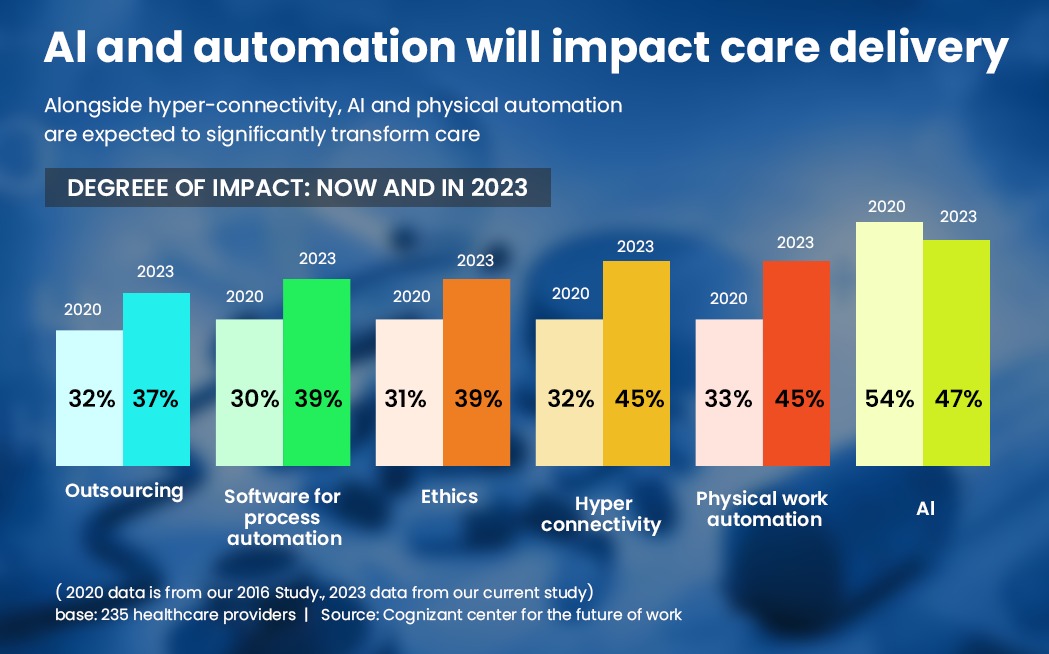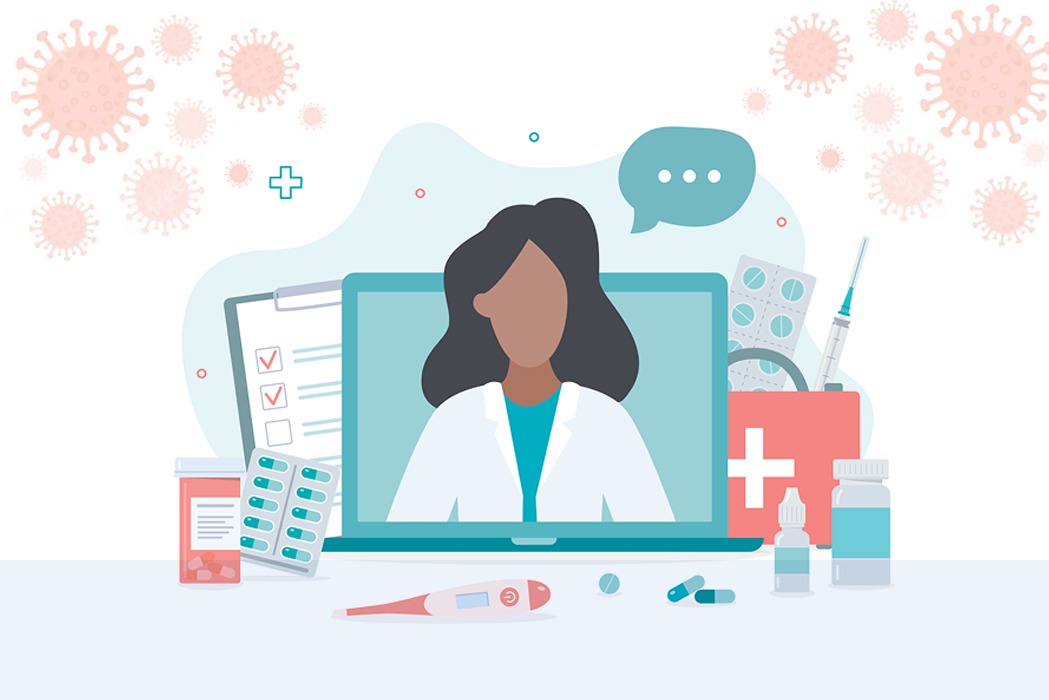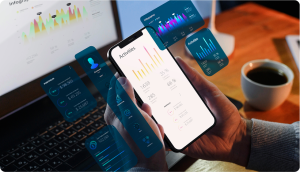
The healthcare industry has always been at the forefront of technology innovation but 2020 saw many healthcare systems crack under the pressure. This has brought into sharp focus the need for greater healthcare digital transformation. In fact, the pandemic has heralded in a new era of digital-first healthcare with artificial intelligence aiding diagnostic care through interoperable systems.
In the path ahead, starting now, we will see technology not just as a welcome resource but rather as an integral part of the healthcare systems. Healthcare technology is going beyond electronic health records. It will call for greater innovation and collaboration between the healthcare provider ecosystem and third-party technology partners.
AI in healthcare will be intrinsic to almost all applications
AI is not new, in fact, it goes all the way back to Eliza, a medical chatbot developed in 1964. However, only in the last 3 years has AI and Deep Learning started to be featured in medical journals like Lancet or The New England Journal of Medicine.
A shortfall of 120,000 clinicians by 2030 pushes for the need to find ways to fill this gap through the increased use of AI applications in healthcare.
The importance of AI applications in healthcare is vital going by the projected shortfall of clinicians in the next decade in the US – a shortfall of 120,000 clinicians pushes for the need to find ways to fill this gap. Most AI applications in healthcare are based on pattern recognition, natural language processing, and predictive analytics. Taking this technology forward, AI use cases seeing increasing adoption in healthcare organizations are in robot-assisted surgery, AI based imaging is creating a new generation of radiology equipment that is developing pioneering work in tumor identification. It will also play a greater role in patient diagnostics, where predictive analytics will be able to identify infectious patterns and also pinpoint high-risk patients. We have already seen its efficacy in this pandemic, in fact this technology has had, we can say, a baptism by fire. Institutions like Mount Sinai, John Hopkins, Mayo Clinic, and the University of California pioneered the use of predictive models to track the virus and understand the severity of possible infections.
Data science integration into clinical care will become the norm in the years ahead. But apart from health diagnostics, AI will also feature in the administrative side as workflow assistants, speeding up most processes.

EHR is expanding with new capabilities
In November of 2020, Google launched its healthcare interoperability platform. It is available in private view and implementation partners can help organizations to deploy it.
So, why is this considered a breakthrough innovation? It is a data engine built in the cloud environment and uses Google BigQueryAI-powered analytics. This will help build advanced healthcare technology tools leveraging unified data from electronic health records, insurance claims data and also clinical trial results. The power of such an integration is to provide faster decision-making not only for clinical diagnosis but also for risk management, resource utilization, and even clinical trial support.
Google has recognized the importance of interoperability and has provided the platform that will power more innovation. Before this, healthcare systems used data warehouses to aggregate data, making it harder to keep up-to-date and even harder to view or share real-time data.
Also Read: How to Ensure HIPAA Compliance for Web and Mobile Healthcare Apps
Expansion of digital tools beyond telehealth
One of the biggest boosts that 2020 saw was the hockey stick adoption growth of telemedicine and telehealth. During this period, nearly 50% of physicians made their consultations through digital platforms. As more health providers become comfortable with digital tools, more advanced systems will be developed. Telehealth will move from a quick diagnostic tool to be integrated fully into patient care workflows. Remote patient monitoring capability will see system-wide virtualization of hospitals.
Claus Jensen, CTO at Memorial Sloan Kettering Cancer Center, believes that we are moving to a hybrid care model that will be deliver integrated care using surveillance capability for inpatient, outpatient and at-home settings. In fact, it is expected that Medicare will expand their telehealth coverage soon and other insurance carriers will do the same. By end of 2022, 30% of patients will access healthcare through a digital front door of sorts.
To reach such an advanced level, organizations will need to work with healthcare technology partners to integrate medical records, point of care, pharmacy, and logistics into a single point of truth.
Also Read: 5 Healthcare Cybersecurity Strategies to Prevent Cyberattacks
An increase in IOMT devices will drive better asset management
GE Healthcare has released a study that points to hospitals having 35000 inventory SKUs but there is only a utilization rate of 32-38%. Every year close to 935 billion USD or a quarter of US healthcare spending is wasted and medical supplies and equipment are part of it. There is a way to cut down on this loss.
The greater use of IOMT devices has shown the advantage of resource visibility through real-time data. The IOMT device examples are smart devices, wearable technology, and medical/vital monitors. We will soon see more equipment tagged with HID Global RFID tags for better tracking of equipment and assets management.
The importance of tracking technology can be better explained through a practical example: A nurse on each shift spends, on average, 20 minutes searching for required equipment. When individual efforts are totaled up it results in a $500,000 loss in productive work.
Asset theft is another reality that asset managers grapple with on a regular basis. In Germany, over 50,000 masks were stolen from the logistics center for Cologne’s medical centers. When protective kits for medical staff are of paramount importance, such theft can put a strain on resources.
Manual record-keeping through spreadsheets or electronic databases is passe. Health organizations are partnering with asset management technology partners like iTech to bring in more visibility and better maintenance of equipment and tools.
The rise of the healthcare mobile apps
Most of the emerging technology requires a mobile environment for successful delivery. There are already over 318,000 mobile health apps in the app stores, encompassing patients, physicians, technicians, pharma reps, pathologists, and admin staff. Since medical apps provide access to portable data, there are numerous use cases for their application such as appointment settings, remote checkups, diagnosis, drug prescriptions, lab results, and many more.
Healthcare experts are confident that by 2030 mobile apps will have standard treatment protocols for most diseases and will be widely used for preventive care.
Many administrative tasks will also move to web and mobile applications. As individuals, if we are handling personal finance on our phones then it is only a matter of time before this convenience will be available to practice managers as well.
As we move into 2022, healthcare systems will need to have a digital transformation strategy. Successful implementation will require a technology partner who has experience in achieving goals for digital services.







